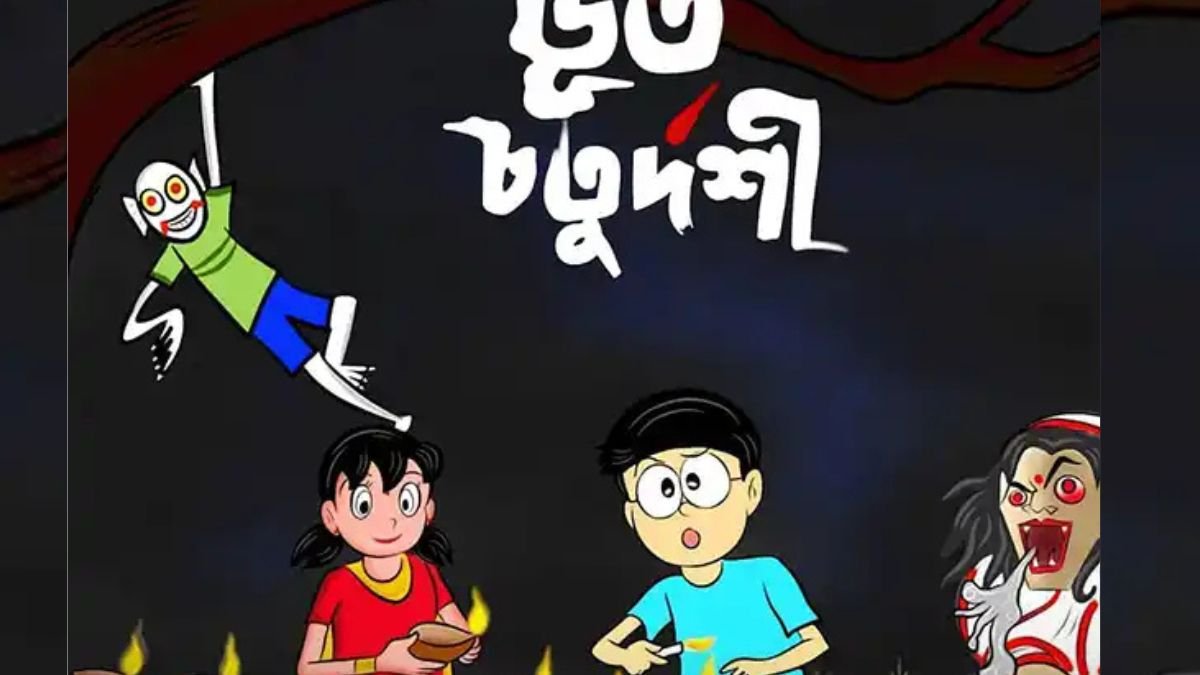
Families and businesses alike place great importance on the Diwali festival. Commencing with Dhanteras, the celebrations last for five days. Narak Chaturdashi, which is celebrated the day before Diwali, is the day that Lord Krishna destroyed the demon Narakasura, according to Hindu scriptures.
The day is known as Bhoot Chaturdashi in West Bengal. It is celebrated on October 30 of this year, one day prior to Diwali. The day, also known as Kali Chaudas, is devoted to worshipping Goddess Kali and using a variety of rituals to ward off negative energies and evil spirits.
Bhoot Chaturdashi is known as Bengal’s version of “Halloween” since it is a special day when people celebrate their ancestors. Historical Background and Importance The words “bhoot,” which means ghost or spirit, and “chaturdashi,” which marks the fourteenth day of the lunar calendar, are the sources of the term “Bhoot Chaturdashi.” People thought that these ghosts returned on this night to bless and protect their offspring, hence the event is claimed to have started as a way to celebrate ancestors from 14 prior generations. Additionally, as wandering spirits are believed to become more active around this period, it is consistent with beliefs about warding them off.
In West Bengal, Bhoot Chaturdashi was customarily observed as a night of spiritual purification, recollection, and protection before Diwali. Bhoot Chaturdashi emphasises the harmony between paying respect to the ancestors and protecting the living from evil forces, in contrast to Diwali’s emphasis on light and prosperity. Customs and rituals Families light 14 diyas (earthen lamps) and scatter them about the house on Bhoot Chaturdashi, especially in shady areas and near doorways.
One generation of ancestors is thought to be represented and guided by each diya, which welcomes them into the home and guards against unwanted spirits. The victory of light over darkness and peace over chaos is symbolised by the diyas, which form a warm, protecting barrier.
Eating 14 different types of leafy greens, or “choudosho shaak” as they are known locally, is another unusual custom. This tradition is believed to rid the body of pollutants and has both symbolic and therapeutic significance. The importance of Bhoot Chaturdashi in spirituality The day has profound spiritual meaning.
Lighting 14 diyas symbolises the ability of light to drive off ignorance, fear, and evil in addition to the link to 14 generations of ancestors. Ancestral spirits use each diya as a lighthouse to guide them and bestow blessings on their offspring. More broadly, Bhoot Chaturdashi serves as a reminder of life’s cycles and the enduring connections between the living and the dead.
